The Labyrinth and the Black Madonna
When I was a nineteen-year-old architecture student I spent two weeks in Chartres Cathedral, studying the labyrinth. Most visiting Chartres are there only for a few hours—they are struck by its beauty, its perfect stained-glass windows, its sculptures which are some of the finest medieval art. They sense the holiness of this ancient pre-Christian site, which belonged to the Earth Mother, the Black Virgin, before it was dedicated to the Virgin Mary. But to spend two weeks inside this building is a very different experience, and I found myself completely immersed in sacred space. Chartres was the “blue-print cathedral” for the Gothic movement, and is an almost perfect geometric and harmonic creation. (One of the spiritual centers of medieval Europe, Chartres had an esoteric mystery school that taught sacred geometry as well as sacred music.) There is even a tradition that the stained-glass was made by alchemists, transmuting the light. Chartres Cathedral is an instrument designed to attune the soul of the worshiper, harmonizing the energies of heaven and earth.
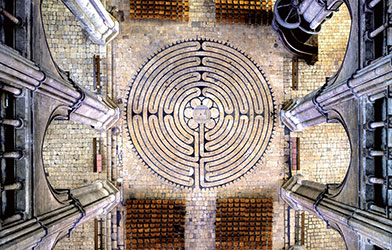 We stayed in the nunnery next door, and, together with a friend, I worked to accurately measure the labyrinth—a circular mandala-pattern, forty feet in diameter, depicted in blue and white stones near the west door. We moved away the chairs and spent hours following this ancient circuitous pattern that images the journey of the soul, the path to the center of the psyche.[1] Medieval pilgrims would kneel their way round the labyrinth’s maze until they reached the center, where they would find an image of the Minotaur (removed at the time of Napoleon), and then turn and look up at the magnificent west rose window, whose twelve-fold mandala images the heart center with luminous beauty.
We stayed in the nunnery next door, and, together with a friend, I worked to accurately measure the labyrinth—a circular mandala-pattern, forty feet in diameter, depicted in blue and white stones near the west door. We moved away the chairs and spent hours following this ancient circuitous pattern that images the journey of the soul, the path to the center of the psyche.[1] Medieval pilgrims would kneel their way round the labyrinth’s maze until they reached the center, where they would find an image of the Minotaur (removed at the time of Napoleon), and then turn and look up at the magnificent west rose window, whose twelve-fold mandala images the heart center with luminous beauty.
While there, one evening we witnessed the arrival of hundreds of students who had walked down from Paris. They surrounded the cathedral, joining hands, and then entering the nave, each person holding a candle—an individual and collective prayer. This simple and powerful image reaches me now half a century later, as a pandemic and ongoing social injustices call out for prayer, for our shared humanity. And this image of the labyrinth also speaks to the journey we are on—individually and together—a journey that takes us step by step back to the center, where we confront the beast of the Minotaur and then turn to the beauty of the heart.
The coronavirus has faced us with our darkest fears, sickness and death, and also shown us our shared humanity that has come together in this crisis—the single lights of care and compassion, that link together to form a community of love and support. And we have also had to face the breakdown of our economic system, so fragile it seems to be blown over by the breath of a virus, leaving millions unemployed, day-laborers destitute and hungry, food lines growing. Despite all the warning of a possible pandemic, there was no “plan B,” just the defenses of denial by authoritarian leaders, more concerned about politics and power than people.
And now as we begin to emerge from lockdown, from forced isolation, into what world are we returning? Our leaders, our corporations, custodians of consumerism, would like us to “return to normal” as quickly as possible. But what of our shared journey, our fears, our suffering and love? As a piece of graffiti in Hong Kong written early in the pandemic stated, “We can’t return to normal, because the normal that we had was precisely the problem.” Should we go back to cheap flights and disposable goods? Should we continue with our exploitation of nature, the imbalance that caused this crisis—the loss of habitat and biodiversity directly causing animal viruses to spread to humans—and the racial injustice and the economic structures that ensure the poor and destitute suffer most?
Racial injustice has also meant that in the United States many people of color, particularly African Americans, and also Native Americans, are experiencing more serious illness and deaths due to Covid-19 compared to white people.[2] And the continuing divisiveness of racial injustice, combined with the ongoing acts of police brutality, have brought protests to the streets of many American cities. The killing of George Floyd and so many others has struck at a deep wound in the American psyche, and we are witnessing both heartfelt solidarity, as well as agony and rage across the country. Once again there is a linking of hands in peaceful protest, but also a country trembling on the edge of violence. On our shared journey we need to embrace this collective pain with its roots in inequality. In a country already battered by the pandemic, do we have the strength to hold true to our deepest human values—equality, unity in diversity, justice?
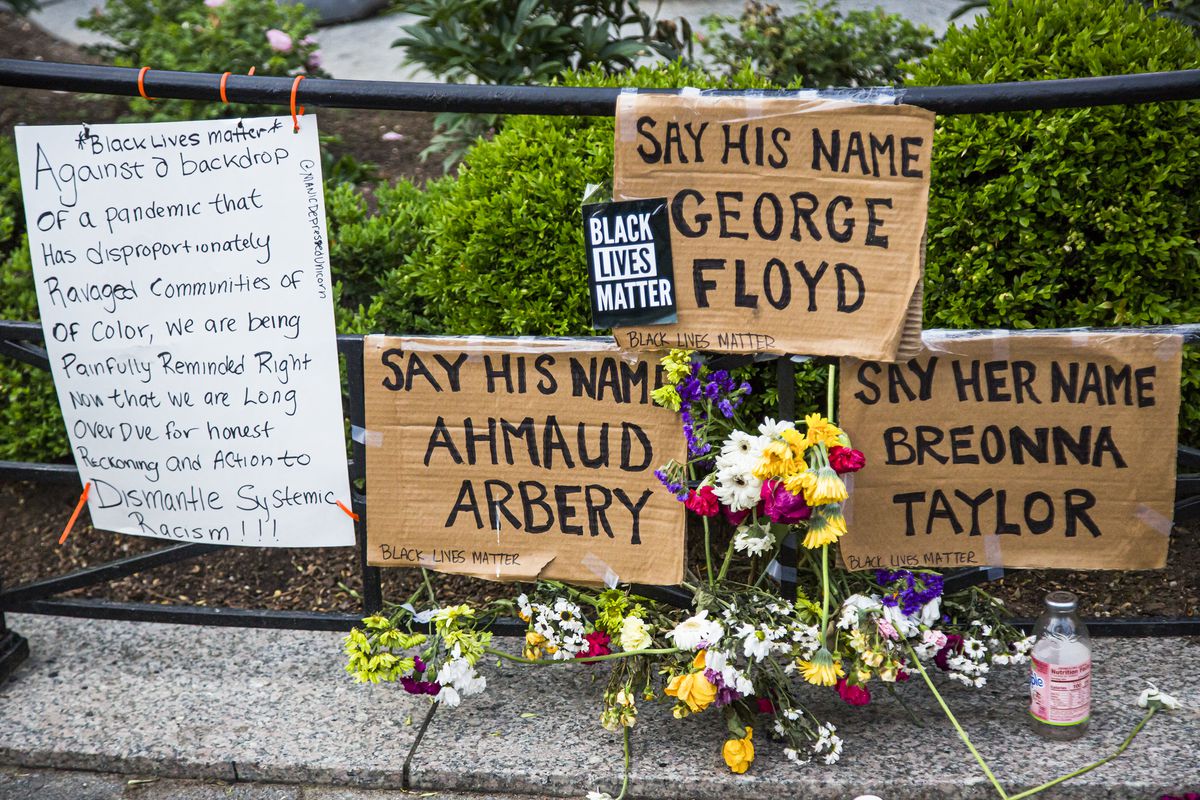
And what does this say of our shared future? Do we dare to really acknowledge that our image of “normal” is over, even though it appears we have no systemic change radical enough to answer our present ecological crisis and the interconnected social justice and economic equality that are so vitally needed? And in addition to the current crises, some of us have already seen an even more dire future. If the last months have shown our collective response to a well-documented and foreseeable pandemic, what does it say for a future of climate collapse?
Divisiveness,[3] injustice, and exploitation, surround us, while humanity and the Earth cry out for a different way of living. There is a pressing need to transition to ways that value life’s inherent unity and interdependent nature, ways that support our diverse human and other-than-human communities. Our culture has indoctrinated us with the idea of progress, but like many of our present patterns of denial this just covers over an older knowing we have lost, the ways of our ancestors who knew what was sacred and held the balance of the Earth. Part of my own journey has been to reawaken to these ancestral memories—memories of a simpler time, when humanity was still young and the Divine was a tangible presence in the air around, like the first sweetness of spring, buds opening, birds calling, “a strain of earth’s sweet being in the beginning.”[4] There was a knowing present then that has now become deeply hidden—a knowing of the sacred purpose of creation, of its beauty and wonder. And this knowing was coming alive, speaking to human beings in all the myriad voices of the world around, in the streams and storms, in the cries of the birds and the animals, in the first language of life. It was the joy of life communing with us.
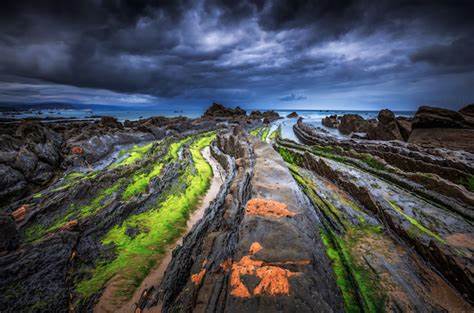 It was a time of wonder, when the colors of creation sparkled in the air of our dawning consciousness. Then all was known in its true sense, and every tree, every animal, every person, and every dream or songline knew where it belonged. And here, in this world, where human and divine could meet and recognize the wonder of what is, spirit and matter did not know any division. That time was a prayer without words, a prayer because all of creation was alive with light, with the song of the sacred. This is what I remember.
It was a time of wonder, when the colors of creation sparkled in the air of our dawning consciousness. Then all was known in its true sense, and every tree, every animal, every person, and every dream or songline knew where it belonged. And here, in this world, where human and divine could meet and recognize the wonder of what is, spirit and matter did not know any division. That time was a prayer without words, a prayer because all of creation was alive with light, with the song of the sacred. This is what I remember.
So much was given at this time, when the soul of humanity and the soul of the world were bonded together, and the Earth showed her generosity. The land was pristine and its sacred nature known and honored. It was a time of beginning, the time of the “Original Instructions,” when the sacred names of creation were given to human beings, first to the shamans, healers, and keepers of the sacred ways—the names of animals that evoked their power, the names of plants that revealed their healing properties, the names of rivers and mountains that ensured that the world was kept in harmony and balance—and through them humanity and the created world came into relationship and were woven together in praise and thanksgiving. There was a purity of intention in this relationship between humanity and the Earth and all its myriad creatures; their partnership had a sacred purpose.
Later it all began to change, and that is the story of separation, the myth of the Fall; and the patterns of distortion that covered the Earth became stronger and stronger, until today we find our self in a world that has lost its way, that is spinning more and more out of balance. But this memory of how it was in the beginning, this story that is so ancient, that belongs to the Earth at our very beginning, has also become my own story because the Earth is calling, crying out, and I know that there is another way to be. And as each crisis is an opportunity, in this moment between the in-breath of this pandemic and the out-breath of our collective push to return to normal, I am drawn to return to this way of being with the Earth, something so essential and long forgotten, this note that belongs to a deep love for the Earth Herself.
We cannot return to the innocence of this earlier time, but this bond between humanity and creation remains, hidden beneath all the debris of our culture, the inner and outer wasteland we have created. It is part of the link of love that holds everything together, the mystery and power, the primal magic woven into the inner structure of the Earth, long known to mystics, shamans and healers. And if we look carefully, attentive to what is around us, this wonder is still present—in a child’s joyful smile, wildflowers opening to the sun, a fox found curled asleep in my garden. Underneath all of today’s distortions we can reconnect to this magic, this awakened relationship with the Earth. It needs to be remembered.
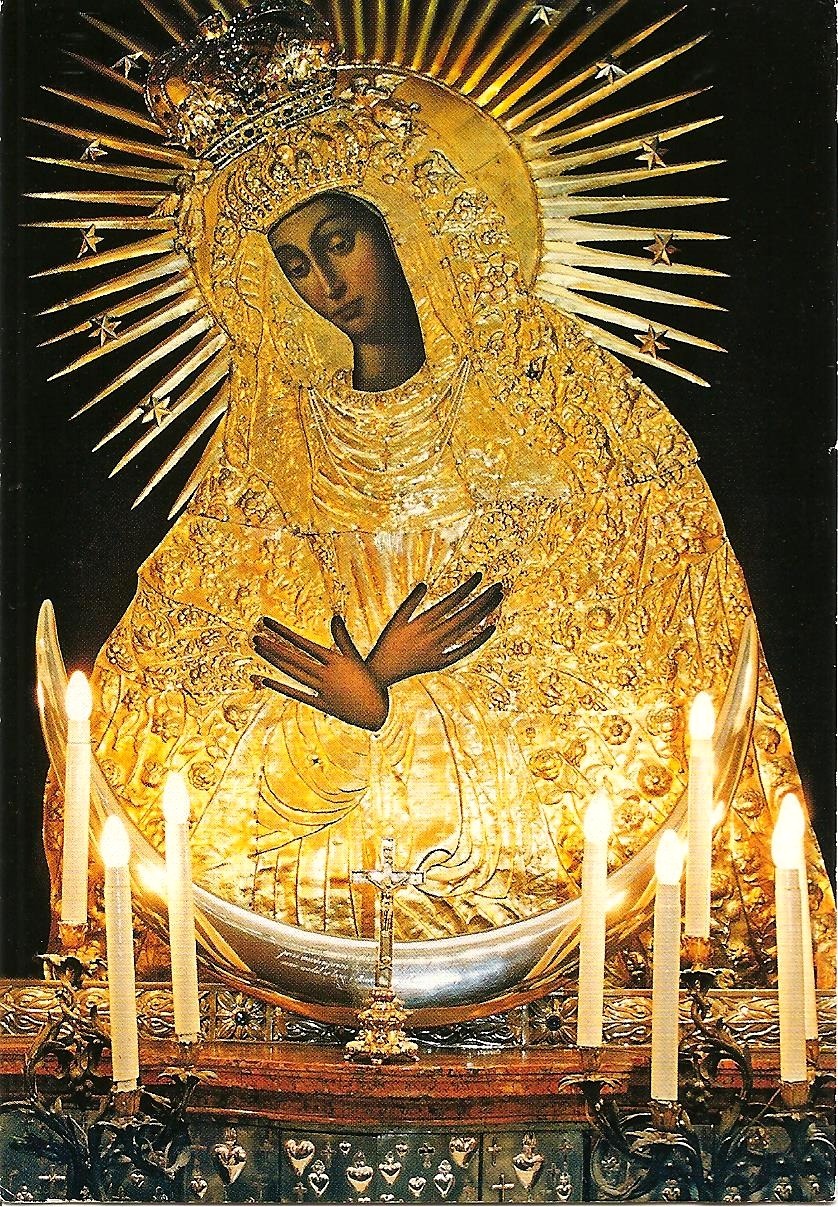 Yes, there is the final message of the labyrinth: the love and light that shone in midst of the darkness, the simple but essential values of care and compassion that hold us and bring us together through this crisis, and belong to our shared journey. But there is also something essential that was present in my early experience of Chartres: the connection to the Earth, the Black Madonna, the ancient mysteries we have long forgotten.
Yes, there is the final message of the labyrinth: the love and light that shone in midst of the darkness, the simple but essential values of care and compassion that hold us and bring us together through this crisis, and belong to our shared journey. But there is also something essential that was present in my early experience of Chartres: the connection to the Earth, the Black Madonna, the ancient mysteries we have long forgotten.
There will be no simple answer to the coming years, except the love and prayer that we hold in our hearts, and the companionship we live with each other and the Earth. We are the inhabitants of a civilization that has lost its way, that has forgotten that the Earth is a living sacred being. And so we stand at a door never before opened, at a crossroads never before reached, when the fate of humanity and the whole web of life hang in the balance. What does it mean to be present at this time of a great dying when the wells run dry and the rivers are toxic? And where are those who hold the balance of the worlds—the rainmaker sitting in his hut holding an inner equilibrium, the monk whose prayer beads and mantras keep the worlds in tune? Yes, a few essential things remain, like joy and love and the beauty of spring blossoms, the stars or a sunset. And in our hearts there is a seed of a future that returns to the beginning, to when the Source ran free and the names of creation sang in the wind.
[1] The result of our work was an article, Chartres Maze, a Model of the Universe?, by Keith Critchlow, Jane Carroll, and Llewellyn Vaughan-Lee, which suggests that the maze is a symbolic image of both the planets and the psyche.
[2] See “Coronavirus in African Americans and Other People of Color” by Sherita Hill Golden, M.D., M.H.S., published by Johns Hopkins Medicine.
[3] A divisiveness dangerously encouraged by social media, as evidenced in the algorithms of Facebook. In 2018 Facebook’s experts found that the platform exploited the human brain’s attraction to divisiveness, feeding users “more and more divisive content in an effort to gain user attention & increase time on the platform.”
[4] What is all this juice and all this joy?
A strain of earth’s sweet being in the beginning
In Eden garden.
‑Gerald Manley Hopkins, “Spring.”



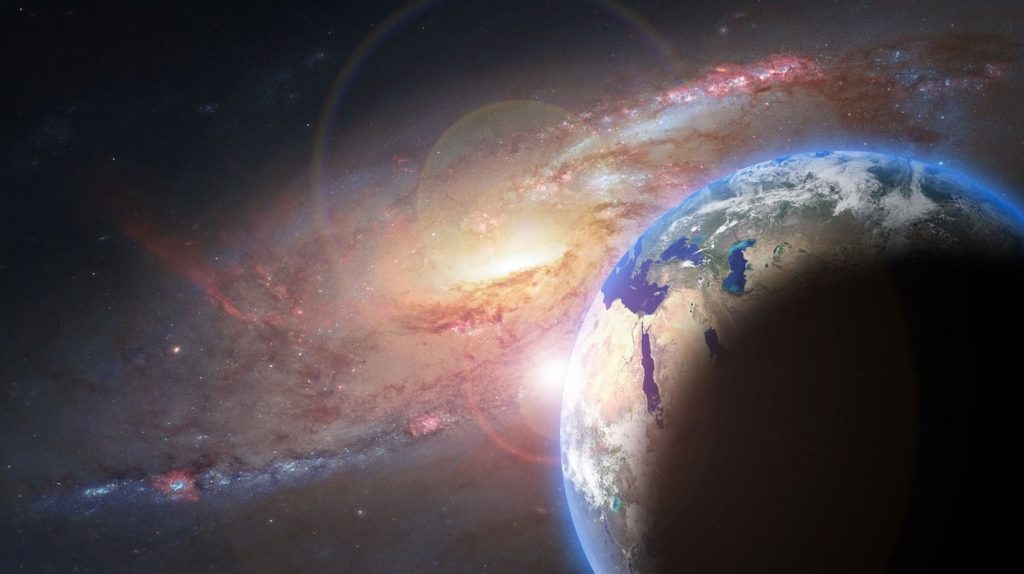
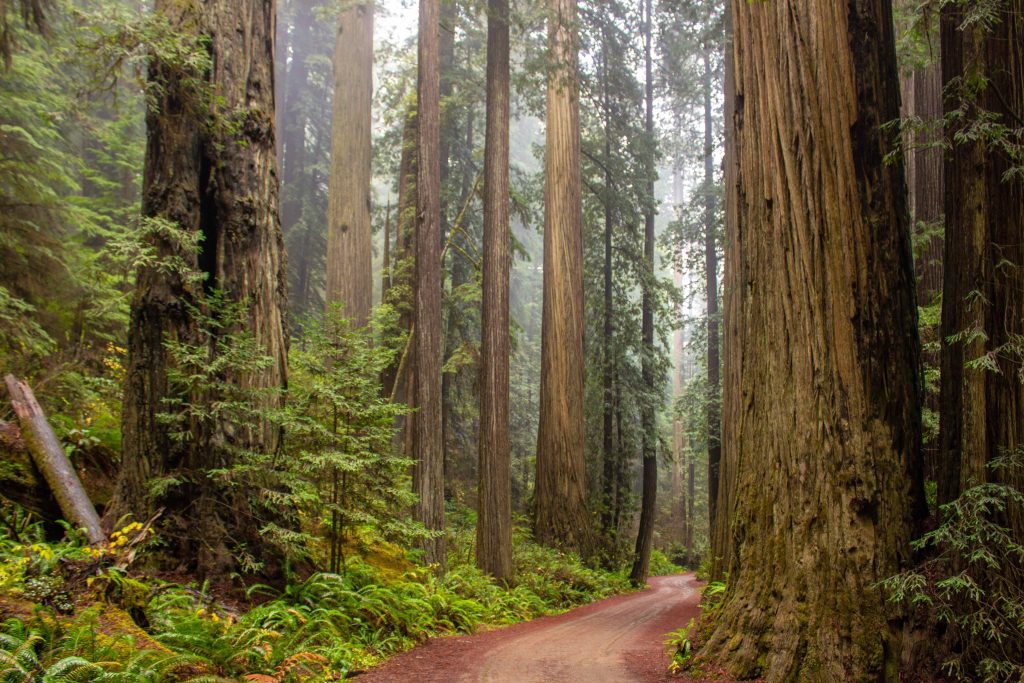
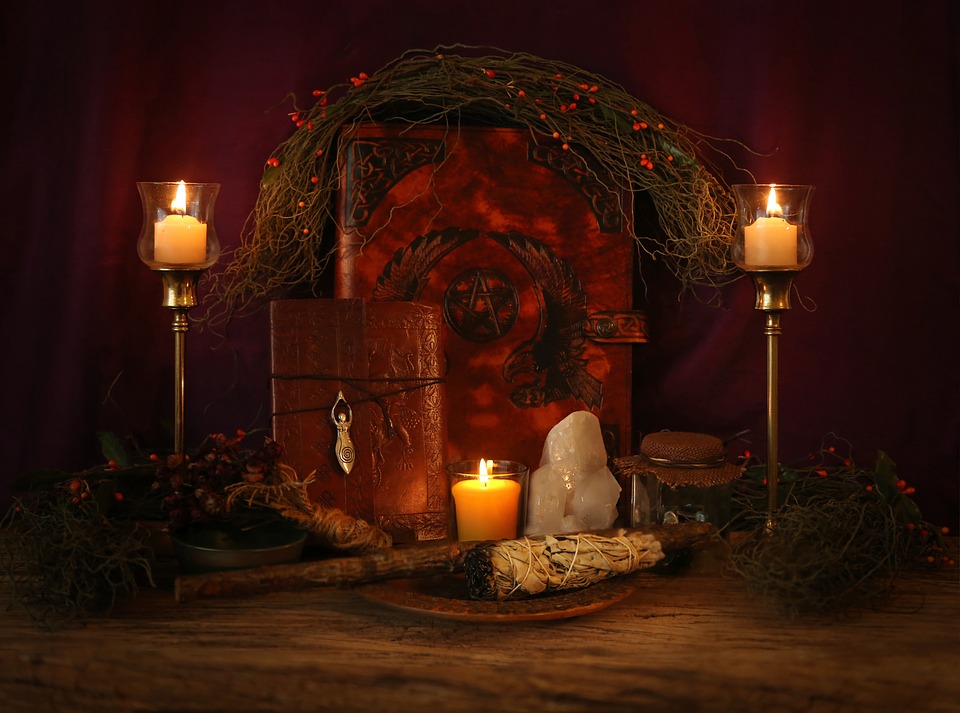
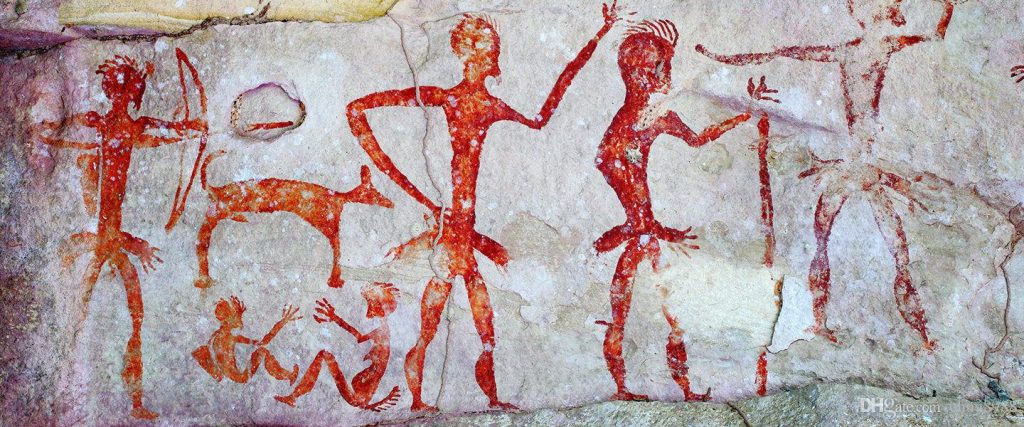
Thank you!
Hi Llewellyn
Your writing, your vision of a long-lost world of beauty and harmony is a thing, of beauty and inspiration in itself.
The place, the space you are coming from and creating from seems magical, transcendental … a call from above and beyond, a beckoning to the separated self of human self-consciousness. I can’t help wondering, did such a harmonious place, a space as this ever exist on planet Earth? And can the vision of it, the longing for it bring it into existence for Homo Sapiens? Or, is it another expression of our separated nature, our unique capacity to create and live in a world of disorder, division and self-destruction while dreaming of, praying for, meditating for the opposite? I wonder as well, is it possible that our species did not evolve in order to survive, rather, in order to transform, to bring about a leap in the evolution of life? With all of our amazing innate creative, caring, sharing, loving and God-like capacities, such as those you express in your writing, it seems that a reawakening,, the death of the old and the birth of a new form and function of life is not only possible, but is happening right now. Your vision is pointing the way and the immanent collapse of our civilization is pushing us in that direction. Please, keep writing, exploring and spreading the Light and Love within … you are the gift of Creation. An admirer and co-creator, Pete Barnhart.
Thank you – your article is a reminder that we all need to keep such grace in our hearts, daily – if not hourly. It’s so easy to forget that vision, even when looking out at pristine nature – as I do every day – or in the midst of humanity tearing back into the old chaos as fast as it can.
Thank you Pete for your thoughtful comment. When I refer to “the beginning,” rather than describing a particular historical period of our human experience, I am referencing an inner, mythic experience of life as being lived in close relation to the sacred and the Earth, before the Fall, before the story of separation from the Source, or the Divine, became part of our consciousness. However, I do believe that there were periods and places in our history when this quality of consciousness was central to our way of life, as is still reflected in some indigenous cultures. And I find a pressing need to return to this “beginning,” this source or seed consciousness, in order to bring a new civilization into existence.
I believe that the true nature of human beings is not survival, but the evolution or transformation of consciousness. Sadly our present civilization has become so entrenched in its values of greed and domination, competition rather than co-operation, that it cannot contain the next step in our evolution of consciousness, but rather needs to fall apart so that the new can be born, as in Christ’s saying “but they put new wine into new bottles, and both are preserved.” But this next step in our shared evolution with the earth and all of her inhabitants also involves a return to the beginning, to a quality of wholeness that belongs to the essential nature of life.
Your words are truly inspiring. It is rare these days to have such beauty of being surrounding us. Much gratitude. Nancy Roof
When surrounded by so much that is falling away, I am grateful for the reminder that what is essential to life is still here. To know that in the depths of my being so that I may keep my mind and heart turned toward my love for this Earth and on what matters.. Thank you.
What a lovely article to remind us who we are and how to conduct ourselves in a way to remember our way home. Returning to our common root of the union between Spirit and matter. Love radiates from these words as rays of the sun helping the rivers to find freedom from a toxic past to a new beginning with each breath conscious of what it contains the preciousness of life itself. In service and gratitude Heidi Lorenz
Thank you for sharing your writing with us. You write that we cannot return to that time of innocence…Why is this door permanently closed to us? I ask this because I have felt in my own life recently stirrings that have a very similar quality to my childhood experiences. In childhood, even the sun shone differently and just stepping out into the front yard of my home every morning to play was a magical experience. I forgot about this magic for many years. Now, when I look outside my window in the morning, something has changed and it feels like the sunlight saturates the leaves of the trees and the birds sing and the spiders weave their webs with the same quality that they did in my childhood. I think what has kept hope alive in my heart is that I believed these stirrings to be a sign that we can return to that time of innocence, that something pure from a bygone era is once again alive in the air (however faint it might be). Am I living in fantasy? Or is that door closed so that a new door, with a different quality of innocence and purity can be experienced?
Thank you again.
Thank you Rojin for your comment. I have actually written about this very theme in a recent article, When the Source Ran Free, A Story for the Present Time (published by Parabola). The human journey seems to be from innocence to experience, and while the pure magic of childhood is left behind it remains in our consciousness, as the poet Wordsworth says,
Heaven lies about us in our infancy!
Shades of the prison-house begin to close
Upon the growing Boy,
But he beholds the light, and whence it flows,
He sees it in his joy;
I think that it is important that we reconnect to the true nature of this direct experience of life, especially in this time when so much has become toxic, “when the wells run dry.” We hold the seeds of light and magic, an essence that is pure, unpolluted, even as we are aware of the toxicity of the present time, the patterns of divisiveness, racial injustice, desecration and destruction of the ecosystem. And our journey from innocence to experience means that this seed will not just be an idealistic fantasy, but grounded in life as it is, the light and the dark. Then something can be born that does not belong to the distortions and patterns of the past, but rather to the essential nature of life, its love and joy.
Warmly,
Llewellyn
Thank you Llewellyn for your recollections and connections to spirit. Your words inspire me to reflect on my childhood when nature was alive and I lived in a wonder of inclusiveness and magic and to try to bring that into everyday life and to remember that love is the most powerful force.
Thankful for this work.
Where can I get the article on the Chartes Maze?
Dear Ann,
If you are interested in the article by Keith Critchlow on the Chartres Maze, you can contact the Golden Sufi Center, info@goldensufi.org, for a pdf of the original article.
Best,
Llewellyn
nice information thanks for sharing valuable things in this blog
What we are fighting today is world wide.
They are attempting to dominate everyone through fear.
They are using tactics to divide us.
The people of the World need to Unite.
This is not black against white or those who wear a masks and those who do not.
Neighbours should be joining together, not tear each other down.
They are using hate and fear to divide us.
We need to unite as one.
I’m intrigued by the comments about innocence, the child remembrance of this quality of connectedness that may happen more easily when we are young and sometimes come unbidden as adults. It seems to me that, as adults, it is part of our sacred responsibility in this time to consciously cultivate this heightened state of ‘presence’, not only to be nurtured and inspired by it, but to hold and amplify it within our body-souls. To cherish it in our conversations. To be attentive to it while gardening, cooking, listening, breathing. As children, if we were fortunate enough to have contact with the numinous in nature, we were held within this matrix of creation’s love. But that matrix is tattered now, and I fear, from watching my grandchildren, that they know this in their bones and hearts. It us up to us, as wakened adults, to summon the jet-streams of Life within us, in concert with our weary Mother Earth. Never have we been so called… Thank you Llewellyn for you deep dedication to this sacred task.
Dear Llewellyn Vaughan Lee,
listening to these words are confirming that spirituality, ethics, politics, economics walk together. Your sohbats points towards sincerity and inspiration and touches this heart very deeply. In present Covid-times, I always remember your words poiting towards a higher sense of POVERTY : “(…) having nothing and wanting nothing”… Thank you from Brazil, Débora Bolsanello
Astrologer in Maryland
I read your article, you give informative information about Astrology. I was searching for this particular information for a very long.